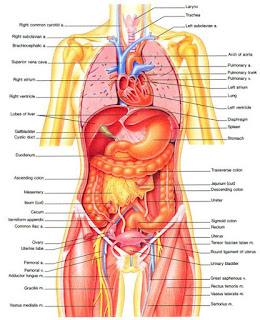Event 5: Extra Credit 2
On June 7, 2018, I attended Coyotes in Two
Directions Event by Sarah Rosalena Brady at Art-Sci Center Gallery at UCLA. This
event was somewhat special for me because when I first looked around the exhibition,
I had no idea what they were, and what they represented. At first I thought I
came to the wrong place. When someone guided me that this was the correct spot,
I slowly looked around and read the description on the website. “Coyotes in Two
Directions examines the signifier of the trickster and shapeshifter as a
symbolic metaphor to create techno-hybrid forms. Coyotes are symbolic in
mythology and present in Western urban landscapes as one of the most successful
animals surviving the Anthropocene. Emergent forms are employed through sculpture,
automata, and 3D scans “(Coyotes in Two Directions). After reading this I
slowly understood what the art works represented, However, I still had no idea
what coyote was.
(Me at the Coyotes in Two Directions)
“The coyote appears often in the tales and
traditions of Native Americans—usually as a very savvy and clever beast … These
members of the dog family once lived primarily in open prairies and deserts,
but now roam the continent's forests and mountains” (National Geographic). After
reading some descriptions, I could see that “Aposematic” represented coyote’s claws.
This art piece was exactly the same art that I saw in the Weak or No Signal event.
This craft was featuring dessert, animal, and virus. Because Coyotes are very smart
and adapted to Anthropocene, I thought about biotech + art topic. Most of the
time, scientist artificially changed and tested genetic of many animals to make
human life better. However, coyotes didn’t not get help from human but still
managed to get along very well. Also, I liked how every time there was a weird
sound and each claws directed to different ways. I felt like this represented
how coyote has the sense that humans don’t have and manage to detect and escape
from danger.
(Aposematic)
 |
| Coyotes Paws |
The long stick of feet on each end, I had
no idea what they represented. There were two sticks and total of 4 paws of
some animal. I assume that those paws are coyote’s. Since the material was very
similar to Aposematic, made with some silver metal, I assume that they were
related to each other. I feel like there is robotic + art technology behind it
because it is made of same material and the claws are sending signal to the
paws.
 |
| Rattlesnake Tail |
This art piece also had no idea what it
was. My friend told me that it looked like a rattlesnake’s tail. Because the
environment represented dessert, rattlesnake was the prefect representation. “A
rattlesnake's rattle is composed of a series of hollow, interlocked scale-like
segments made of keratin. The snake produces its rattling sound by activating
special muscles in the tail which causes the segments to vibrate and rub
against one another” (Ryan, Kate). Because rattlesnakes are very poisonous snakes,
if they bite coyotes, coyotes will die within a day, therefore, Sarah Rosalena
Brady was trying to represent that every time coyotes hear or feel rattle snake,
they keep out of it.
This event was related to medtech + art
topic because exhibition was about how coyotes were able to evolve themselves
and keep out of rattlesnakes. However, I would not recommend students to this
exhibition because it lacked of information and there was really nothing to
watch. Everything that I had to assume it and only three art pieces were there.
However, it was beneficial for me because I learned about coyotes and more
about how rattlesnakes make sound.
1. “COYOTES
IN TWO DIRECTIONS.” COLLECTIVE BREAD DIARIES: A TASTE OF PROTEST | UCLA Art | Sci Center + Lab, 1 Jan. 1970,
artsci.ucla.edu/node/1395.
2. “Coyote.” National Geographic, 10 May 2011, www.nationalgeographic.com/animals/mammals/c/coyote/.
3. “Rattlesnake.” Wikipedia, Wikimedia Foundation, 7 June 2018,
en.wikipedia.org/wiki/Rattlesnake.
4. Ryan, Kate. “What's Actually Inside A
Rattlesnake's Tail Will Really Creep You Out.” Elite Daily, Elite Daily, 25 Apr. 2018, www.elitedaily.com/envision/what-is-inside-a-rattlesnakes-tail/1445492.
5. Study.com, Study.com,
study.com/academy/lesson/coyote-adaptations-lesson-for-kids.html.
6. “What Exactly Is Inside a Rattlesnake's
Rattle?” Interesting Engineering, 12 Mar. 2018,
interestingengineering.com/whats-inside-rattlesnakes-rattle.






댓글
댓글 쓰기